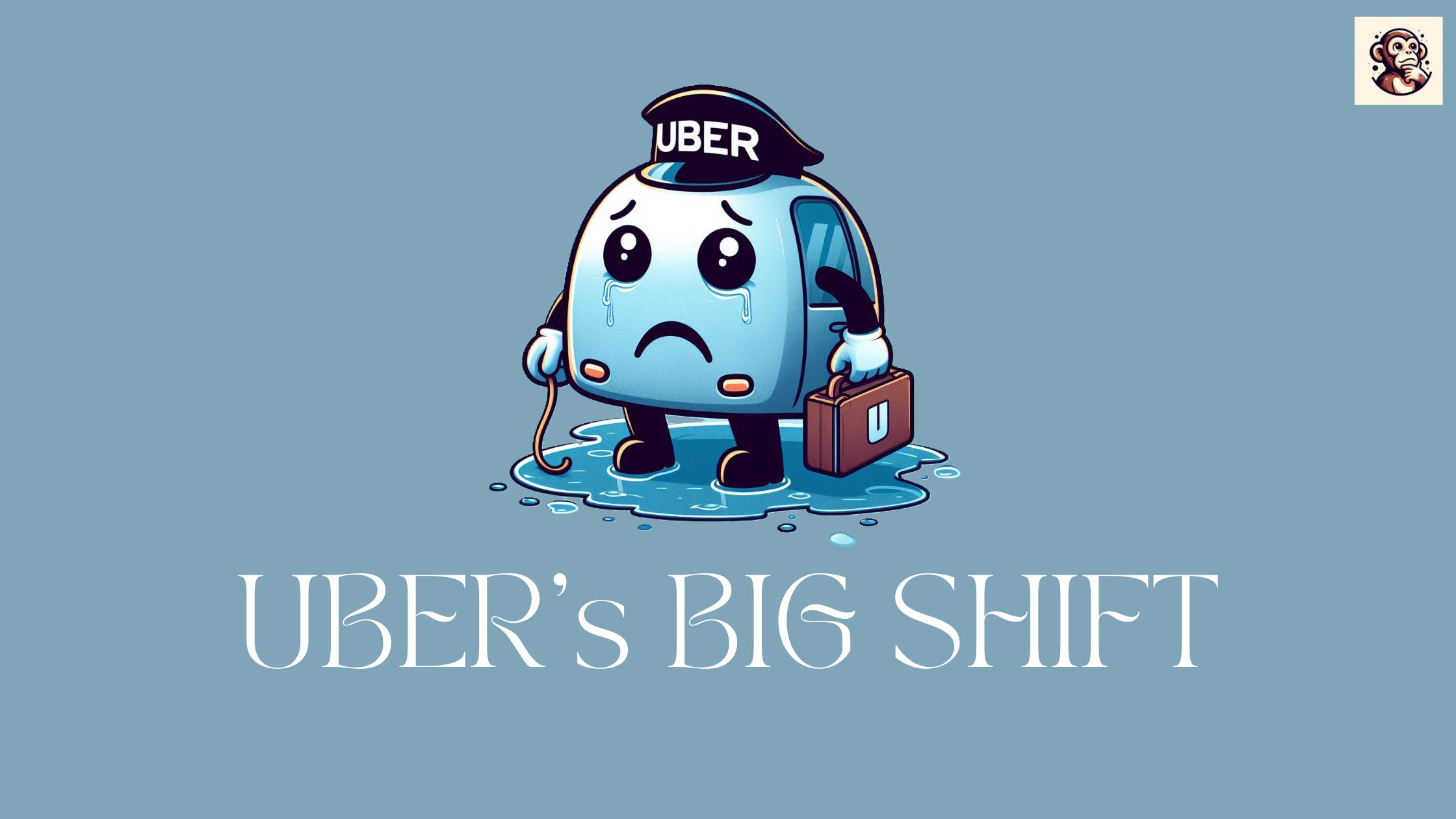Uber changed how people travel by making it easy to find a ride with just a few taps on their phone. However, its business model has created unforeseen problems for drivers and riders. These problems and opportunities led to new competitors offering better solutions by adopting a different approach, forcing Uber to rethink its business model.
Uber began by solving a simple problem: finding a taxi was often a difficult task. Before smartphones, people had to wave down cabs on the street or call a service and wait for them to arrive. Uber utilised new technology—GPS in phones, Google Maps, and mobile apps—to connect drivers with riders efficiently. Uber also got into handling payments in a quest to transform the ride-hailing experience fully. Instead of riders paying drivers cash directly, Uber collected the money through the app and paid drivers later. Uber took a percentage of each ride as its fee, which helped the company earn money by controlling the money flow.
While Uber’s system worked well for riders, it created problems for drivers. Uber’s fee, often a significant share of the fare, meant drivers earned less money per ride. Over time, drivers became frustrated because they did the hard work—driving, maintaining cars, paying for fuel—but earned less than expected per ride. What hurt them the most was that the drivers felt charging a flat percentage per ride was unfair. Riders also became aware of the percentage cut and realised they were paying more because Uber took a cut per ride, which they deemed unjust.
To avoid Uber’s fees, drivers started asking riders to cancel rides on the app and pay them directly in cash. This way, drivers kept the full fare. However, this didn’t align with the strategy of the platform owned by Uber. Uber tied drivers' earnings to the schemes to incentivise the drivers to work long hours, which many drivers complained about. It showed that drivers were unhappy with Uber’s control over their earnings.
Riders also faced issues. Because Uber took a cut, fares were sometimes higher than they would have been if Riders paid drivers directly. This meant Riders paid more, and drivers earned less—a system that didn’t feel fair to either group.
The system becomes unstable whenever the system entities feel it is being operated under unfair rules. Over time, an unstable system realigns itself and tweaks the rules to find a balance and equilibrium driven by fair rules. This is exactly what happened in Uber's case with the new competition from the new entrants who put the drivers at the centre of their strategy.
The tension between drivers, riders, and Uber showed that the system was unbalanced. Drivers wanted more control over their earnings, and Riders wanted lower fares. This opened the door for new companies to offer better solutions.
Companies like Namma Yatri, Rapido, and InDrive gave drivers more control. Instead of taking a large cut per ride, these apps charge drivers a small, fixed fee to use the platform, similar to a subscription. This meant drivers kept all of the fare, and riders often paid less. This introduced an element of control for drivers in the system. The riders felt there was no middleman involved.
These apps became popular, and drivers and riders quickly switched to them. Uber and similar companies, such as Ola, began losing customers because their models weren’t as fair or appealing.
Uber realised it was losing ground to these new competitors. To stay in the game, Uber had to change its approach. It began moving toward a model similar to its competitors, acting more like a software provider. Instead of taking a percentage of every ride, Uber started offering its technology to drivers for a fee, allowing them to keep all their earnings. The primary driver of this move was the fear of losing market share.
This change indicates that when a system is unbalanced—when one group, such as drivers, feels unfairly treated—it will eventually move toward greater fairness. Uber’s ride-hailing industry took about 15 years to find a balance where drivers, riders, and the platform could work together happily.
Smaller companies, such as Namma Yatri and Rapido, were nimble, listened to drivers and riders, and offered a fairer system. These smaller players challenged Uber by focusing on what people wanted: lower costs for riders and better earnings for drivers.
Even though Uber, the giant, reacted by changing its model, the smaller companies had already captured a significant portion of the market. They showed that a fair and balanced system could beat a giant. In this battle, new entrants who focused on the perception of control and fairness in the rules captured a significant market share, demonstrating that even the most prominent companies must adapt to survive.
Uber’s journey shows that a business must keep everyone—drivers, Riders, and the platform—happy to succeed. When Uber’s model prioritised its profits over those of drivers and riders, it created an unbalanced system. New competitors stepped in with fairer solutions, forcing Uber to change. It reminds businesses that fairness and balance are essential to building a lasting ecosystem.






Really well-written.... You’ve explained Uber shift and the rise of new players in a very clear and engaging way. The focus on fairness and balance in the system stood out to me